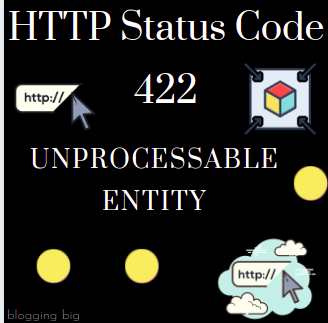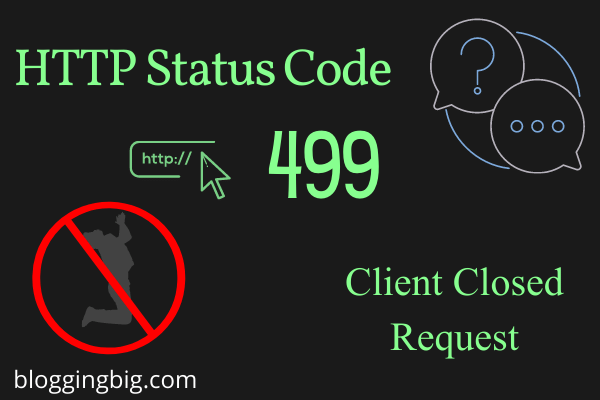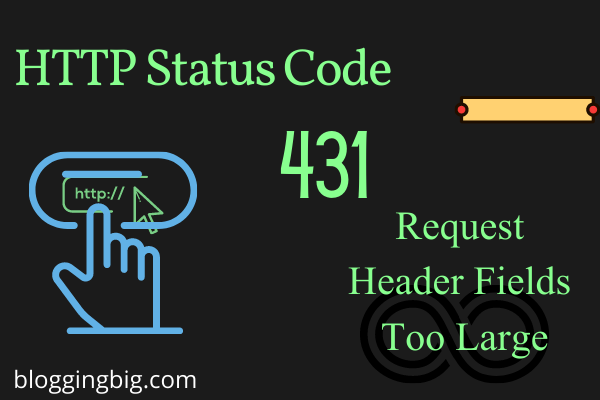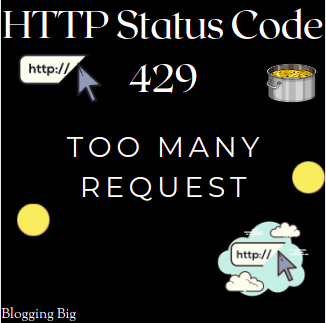Navigation
Introduction
HTTP Status Code 422-Unprocessable Entity is one of the classes of 4xx(Server Error) response code that indicates that the server recognizes the request entity’s content type and grammar, but it is unable to process the instructions contained inside.
This HTTP status was first defined in RFC 4918 and is intended for HTTP extensions that support Web Distributed Authoring and Versioning (WebDAV).
There’s some debate about whether developers should send customers a 400 or 422 error message (more on the differences between both statuses below).
In most circumstances, however, it is recognized that the 422 status should only be returned if WebDAV capabilities are supported.
Status
| 422 UNPROCESSABLE ENTITY |
Possible Cause
Poorly written or faulty database tables are the most typical cause of the 422 Unprocessable Entityerror code, which must be rectified or removed, and regenerated.
This 422 error can also occur when a script is attempting to run but the server does not have the authorization to do so. This could indicate that your web hosting account requires updated permissions, or it could be the result of an incorrectly configured PHP setup in your site’s root folder.
Possible Solutions
Fixing a 422 Unprocessable Entity issue isn’t as simple as it seems. Each scenario’s resolution path can be rather different. The error happens when your data is wrong, or, for lack of a better term, does not make logical sense, as mentioned above in the RFC specification of the 422 status.
Examine your data to see if you defined a piece of information in your request incorrectly. If you still can’t figure out what’s wrong, try posting an example snippet of your code in a web development forum (e.g. Stackoverflow) to see if anyone else can see the problem.
400 Vs 422 Status Code
If the request syntax is faulty, contains erroneous request message framing, or has deceptive request routing, bad request errors utilize the 400 status code and should be delivered to the client. This status code may appear to be very similar to the 422 Unprocessable Entity status, but there is one small difference: the syntax of a request entity for a 422 error is correct, whereas the syntax of a request entity for a 400 error is incorrect.
Only extremely few use-cases should necessitate the usage of the 422 status. The 400 Bad Request status should be used in most other circumstances where a client fault has occurred owing to incorrect syntax.
Related Articles
| HTTP Status Code 204 – No Content |
| HTTP Status Code 300-Multiple Choices |
| HTTP Status Code 302 Found |
| HTTP Status Code 207 Multi-Status |
FAQ
What does HTTP Status Code 422 mean?
HTTP Status Code 422-Unprocessable Entity is one of the classes of 4xx(Server Error) response code that indicates that the server recognizes the request entity’s content type and grammar, but it is unable to process the instructions contained inside.
What are the causes of HTTP Status Code Error 422 ?
Poorly written or faulty database tables are the most typical cause of the 422 Unprocessable Entityerror code, which must be rectified or removed, and regenerated.
This 422 error can also occur when a script is attempting to run but the server does not have the authorization to do so.
This could indicate that your web hosting account requires updated permissions, or it could be the result of an incorrectly configured PHP setup in your site’s root folder.
Specifications
| Specifications | Title |
| RFC 4918, section 11.2: 422 Unprocessable Entity | HTTP Extensions for Web Distributed Authoring and Versioning (WebDAV) |
422 CODE REFERENCES
| Rails HTTP Status Symbol | :misdirected_request |
| Symfony HTTP Status Constant | Response::HTTP_UNPROCESSABLE_ENTITY |
Conclusion
Finally, the 422 status code isn’t used very frequently these days.
The 400 Bad Request status code has gained a lot of popularity since RFC 7231, and it is now commonly used in place of the 422 status code.
However, you might utilize the 422 status code in a very narrow use-case when you’re using WebDAV and need to return a status code for a request that was syntactically correct but conceptually erroneous.
I hope this article was able to help you with your doubts and queries related to the HTTP status code 422 Requested Range Not Satisfiable.
Still, if there are any queries related to this topic, feel free to ask in the comment section, we would be happy to assist you. Thank you.





Saurabh Chalise